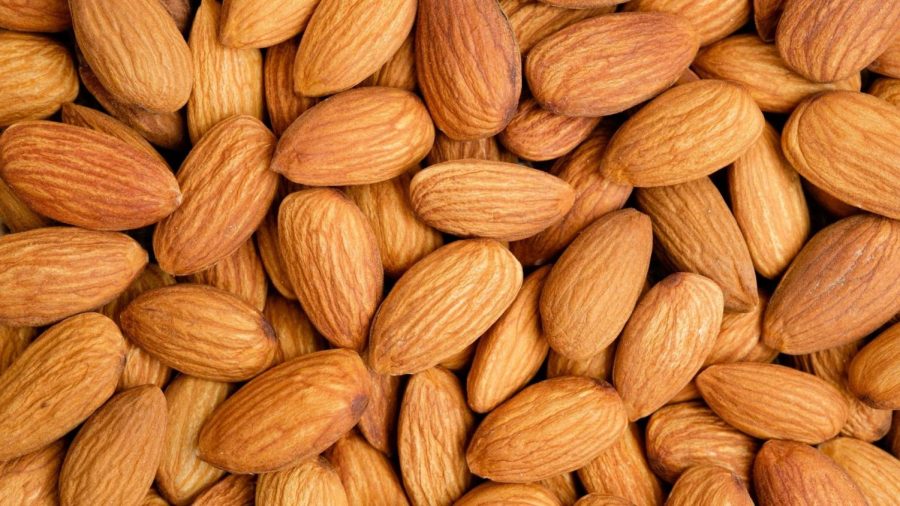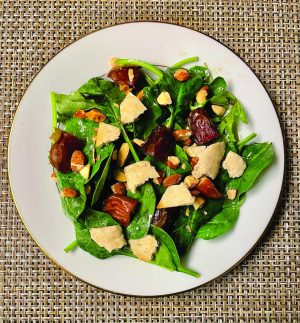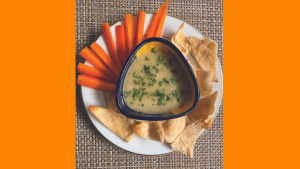What’s so Jewish about good old almonds? Plenty.
Published April 16, 2022
Almonds play a special role in the Torah. Indeed, other than pistachios, they are the only nuts mentioned in the Torah. And not just once but multiple times. For example, in Exodus 25:32, God directs Moses to have the Children of Israel build a sanctuary. Among the specifics for the sanctuary are directions for the creation of a gold menorah: “There should be three cups made like almond blossoms in one branch, a knop and a flower; and three cups made like almond blossoms in the other branch, a knop and a flower.”
Native to Israel, almond trees date back thousands of years. They are the first fruit trees to bloom, and they do so before spring arrives. And before the leaves appear, these trees produce fragrant and beautiful flowers.
There are two species of almond trees: cultivated almond trees and bitter almond trees. The cultivated variety, the majority of which are now grown in California, are the ones we delight in eating. The skins of these almonds are edible; however, for baking purposes, many people prefer to use blanched almonds, which are almonds that have had their skins removed. You can purchase blanched almonds at some ethnic markets, or you can do it yourself. Simply place almonds in a pot of boiling water for one minute, rinse them in cold water, and then slip off the skins.
Bitter almond trees, the oldest ones, produce nuts that contain a poisonous acid called HCN. To make them edible, these bitter almonds must undergo a process to remove that deadly acid. The resulting nut meat, with its concentrated flavor, is the key ingredient in almond extract.
Almonds have been an indispensable ingredient in cuisines the world over and are used in many foods we associate with those cuisines. For example, Greek skordalia, a sauce made from almonds and potatoes, is frequently served with fish and vegetables or as a dip. So, too, Spanish ajo blanco, made with almonds, bread and garlic, is the original gazpacho, created long before tomatoes made their way to Spain from the new world. And macarons, the French “rainbow” sandwich cookies, are made with almonds and egg whites.
Sephardic cuisine includes almonds in many main dishes and desserts. For example, there’s the Sephardic almond sauce bademli, which is made from a mixture of water, almonds and parsley and used to top a variety of meat and fish dishes. There is also almond baklava; fnaro, a honey-sweetened egg custard; travados, an almond and currant filled pastry; and other such dishes featuring or incorporating this ancient tree nut.
So, too, almonds are plentiful is Ashkenazi cuisine, including the iconic mandelbrodt (“mandel” is Yiddish for “almond”); almond milk, which long predated the current health craze; kifli, ground almond cookies in a crescent shape; rolled cakes with an almond filling; haroset for Passover; and those delicious dumplings for chicken soup that include finely chopped almonds in an egg and matzah meal mixture.
The Hebrew word for almonds is shakeid, which means “watchful.” It is symbolic for God’s watchfulness over the Jewish people. For many cultures, almonds are a symbol of hope, happiness and renewal. For example, at many Jewish weddings, newlyweds are showered with almonds as they leave the chuppah. Jordan almonds, the pastel candy-coated almonds, are frequently given out as a traditional wedding party treat at many Jewish and Greek wedding receptions.
There are so many ways to enjoy almonds: out of hand, ground into milk, almond butter, marzipan, almond paste, frangipane and in any number of exciting culinary creations.
Besides being delicious, almonds pack a wallop of nutritional benefits. In their beautiful book “Almonds,” my friend Barbara Bryant and her co-author Betsy Fentress identify almonds as a superfood: “Compared to other tree nuts, they rank first in protein, fiber, calcium, vitamin E, riboflavin and niacin. Plus, they deliver another startling property: Even though a 1 ounce (30 g) serving has 160 calories, the body absorbs only 129 of those calories.”
So, what are you waiting for? Grab a handful of almonds to snack on. Or, for a more elaborate snack, stuff an almond inside a pitted date. Or sprinkle a large handful of chopped almonds on top of your favorite salad, hot grain dish or roasted chicken.
Another idea: Make dukkah (an Egyptian nut and seed condiment). It’s easy. Combine a half cup each of almonds and pistachios in a small food processor. Pulse to finely chop. Add 1 tablespoon each of sesame seeds and poppy seeds and a half tablespoon each of toasted cumin seeds, fennel seeds and coriander seeds. Pulse to combine and add a bit of salt to taste. Store in a jar at room temperature and use it to garnish or add pizzazz to soups, salads, roasted vegetables and your favorite hummus.
Below are a few other delicious recipes using this ancient but delicious tree nut. Bon Appetit!



















